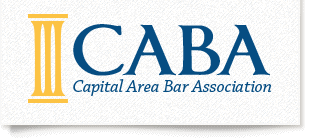PRACTICE AREAS
SUBSCRIBE TO OUR BLOG
SUBSCRIBE TO OUR BLOG
ASSOCIATIONS
Madison County Bar Association
Retaliation in the workplace.

Workplace retaliation
We previously wrote here about Title VII, a federal law that prohibits employment discrimination based on race, color, religion, sex and national origin. Today, we discuss the related concept of an employer’s retaliation against an employee who exercises her rights under Title VII.
Under federal law, it is unlawful for an employer to discriminate against an employee because she has:
- opposed any practice made unlawful by Title VII, or
- made a charge, testified, assisted, or participated in any manner in an investigation, proceeding, or hearing under Title VII.
What are some activities protected against retaliation?

Retaliation at work
There are many ways in which an employer could retaliate against an employee. The EEOC has given some examples:
- filing or being a witness in an EEOC charge, complaint, investigation, or lawsuit.
- communicating with a supervisor or manager about employment discrimination, including harassment.
- answering questions during an employer investigation of alleged harassment.
- refusing to follow orders that would result in discrimination.
- resisting sexual advances, or intervening to protect others.
- requesting accommodation of a disability or for a religious practice.
- asking managers or co-workers about salary information to uncover potentially discriminatory wages.
This is not an exhaustive list.
What constitutes retaliation?
In retaliation cases, the courts look to see whether the employee has suffered an “adverse employment action.”
Some forms of retaliation are obvious, such as firing or demoting the employee. Other forms of adverse employment actions can include:
-reduction in pay
-more burdensome assignments or work hours
-denial of promotions
-repeated harassing behavior
Read more here at the EEOC website.
How to prove a prima facie case of retaliation.
The phrase “prima facie” means “ sufficient to establish a fact or raise a presumption unless disproved or rebutted.”
To prove a prima facie case of retaliation, the employee must establish all three of these elements:
(1) that he participated in an activity protected by Title VII;
(2) that his employer took an adverse employment action against him; and
(3) that a causal connection exists between the protected activity and the adverse employment action.
As to the third element, the test is “but-for causation.” In other words, the employee must prove that he would not have otherwise suffered the adverse employment action but for the employer’s wrongful retaliation.
If the employee makes a prima facie case, the burden then shifts to the employer to proffer a legitimate rationale for the underlying employment action.
If such a reason is provided, the employer then bears the burden of proving that the employer’s reason is a pretext for the actual retaliatory reason.
The question of the validity of the initial complaint.
Assume an employee files an EEOC charge alleging that certain actions of his employer violated Title VII. Ultimately, it is determined that the employer did not violate Title VII.
If the employer then retaliates against the employee, does the employer violate Title VII?
The answer is “yes”, as long as the employee had a reasonable, good faith belief that the practice in question violated Title VII .
Panter Law Firm, PLLC, 7736 Old Canton Road, Suite B, Madison, MS 39110
601-607-3156
www.craigpanterlaw.com
The post Retaliation in the workplace. appeared first on Panter Law Firm, PLLC.








